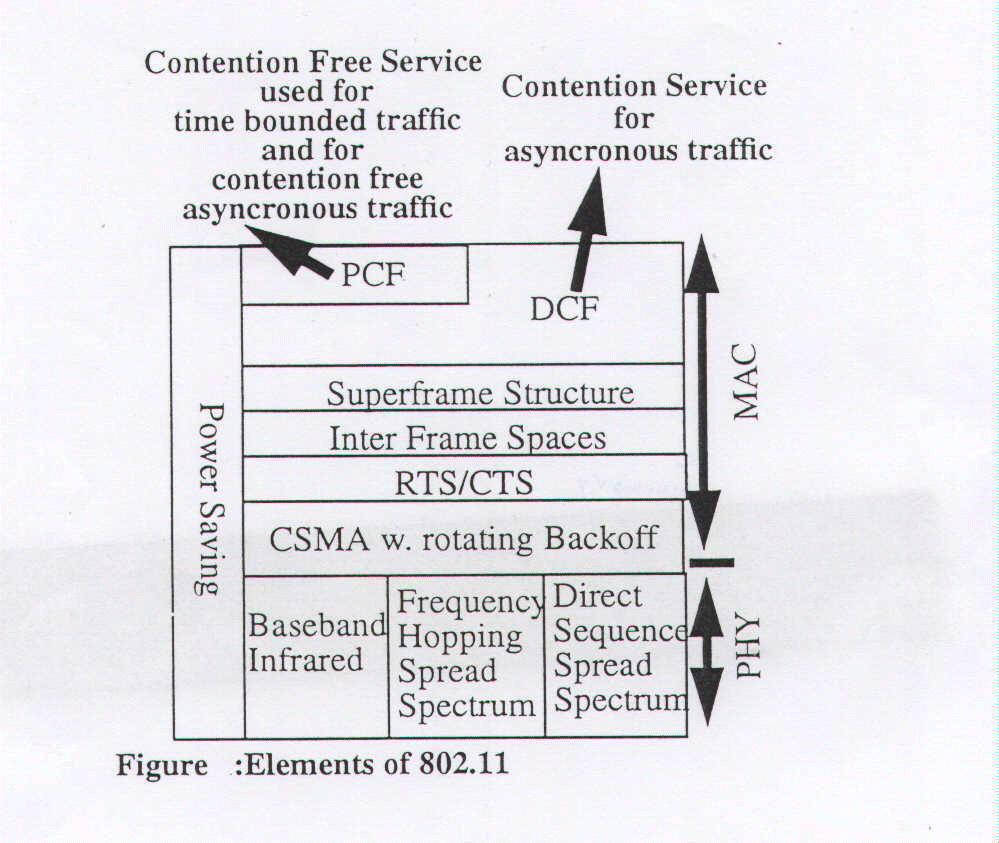DESCRIPTION OF STANDARD - MAC COMMUNICATION PROTOCOL
IEEE802.11 PROVIDES 2 KINDS OF ACCESS CHANNEL METHOD
The so-called Coordination Function is one mechanism to decide when to be able
to transfer the data for a certain station. DCF is the basic access method of
IEEE 802.11 MAC, using the technique of CSMA/CA( carrier-sense multiple access/
collision avoidance) to let the stations transfer the assynchro data. We can
apply the method to AD Hoc and Intrastructure WLAN. PCF provides the function
that stations can transfer the time-bounded data by contention free method,
so the frames collision won't occur. But PCF can be applied to the infrastructure
WLAN. Figure describes the framework of IEEE 802.11 MAC communication protocol,
and PCF operates by DCF.
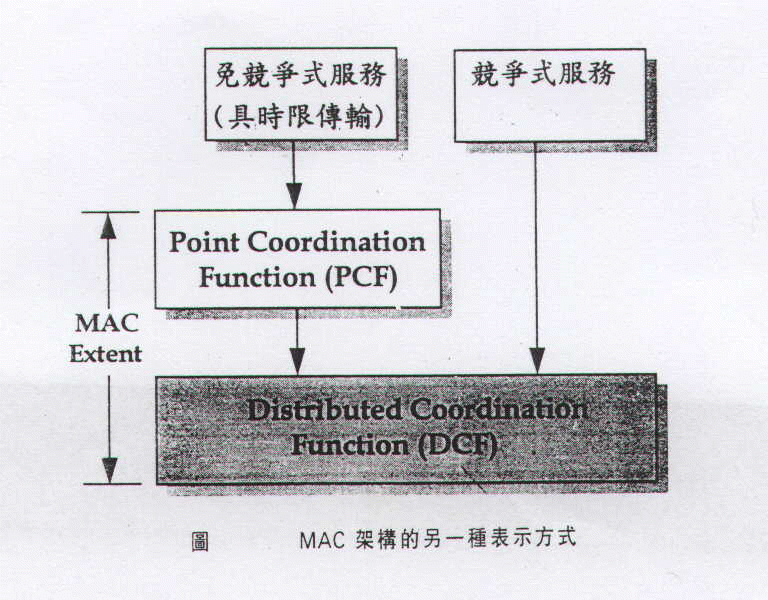
DCF
BASED ON CSMA/CA
DCF is the basic access method in IEEE 802.11. DCF mode letw different stations
share the same media and solves the collision between stations using the tech
nique of CSMA/CA. CSMA/CA judges that the signal magnitude is above one thres
hold by carrier-sense technique. If the signal magnitude is under this thres
hold, it appears that the bandwidth is not occupied and stations can use the
bandwidth to transfer data. On the contrary, if the signal magnitude is above
the threshold, it appears that the channel is busy and stations have to defer to
transfer data. Stations can not transfer frames until the channel is free.
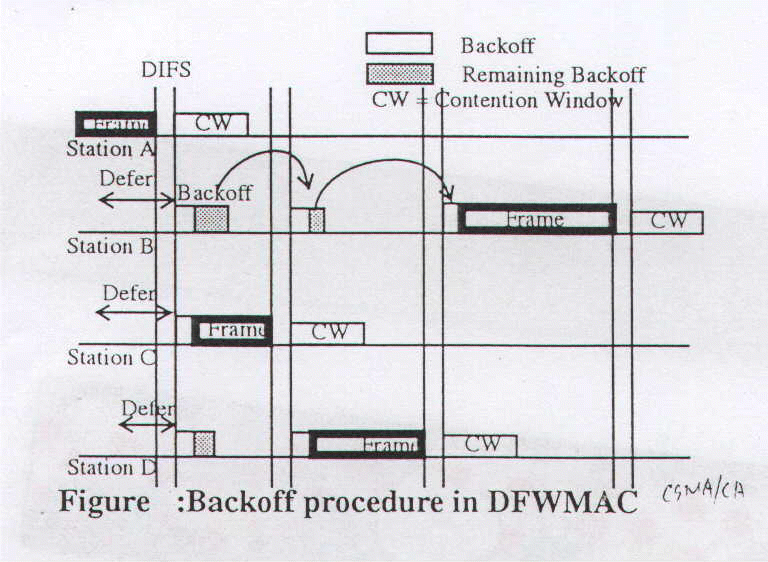
INTER-FRAME SPACE(IFS) TIME INTERVALS
In fack, IEEE 802.11 divides the frame by three different priority level; every
frame with individual priority level has to wait for a fixed period before being
transfered. The period is called Inter-Frame Space, IFS:
The higher priority level the frames have, the shorter IFS is. Thus, the frames
with higher priority level have better chance to use media. In other words,
when stations find that the channel becomes free from busy situation, they can't
transfer frames immediately. They should wait for a proper period by the priority
level of frame and during this period the channel keeps free; they just can
transfer frames. With this method, it is very possible that the frames with the
same priority level collide. Because the frames with the same priority level
waiting for the same time(IFS) and the channel is free, then the stations will
transfer the frames simultaneously and collision occurs. The solving method is
that afer waiting for the IFS, the stations wait for a random delay time and then
transfer the frames. We call this time as backoff time. Because the time slot
of backoff window selected by every station is different probably. The rate of
collision reduces. This is the property of backoff algorithm.
2 PROBLEMS IN WIRELESS LAN
In WLAN, there are two problems:
PCF
SUPERFRAME:CONSISTING OF PCF and DCF
The service offered by DCF is a contention service, that is used for asynchronous
traffic. This service does not guarantee any boundaries for access delay or
available bandwidth. In order to also offer contention free srevice for time
bounded traffic or contention free asynchronous traffic the point coordinated
mode PCF may also be used on top of DCF.
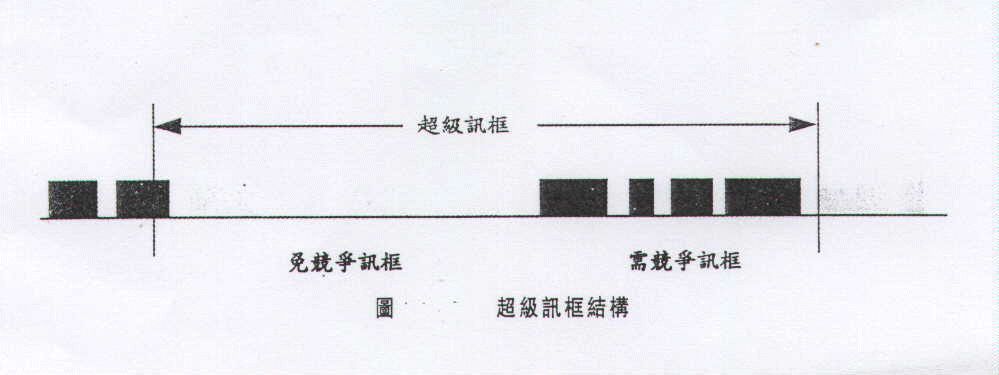
CSMA/CA + RTS/CTS FLOW FIGURE
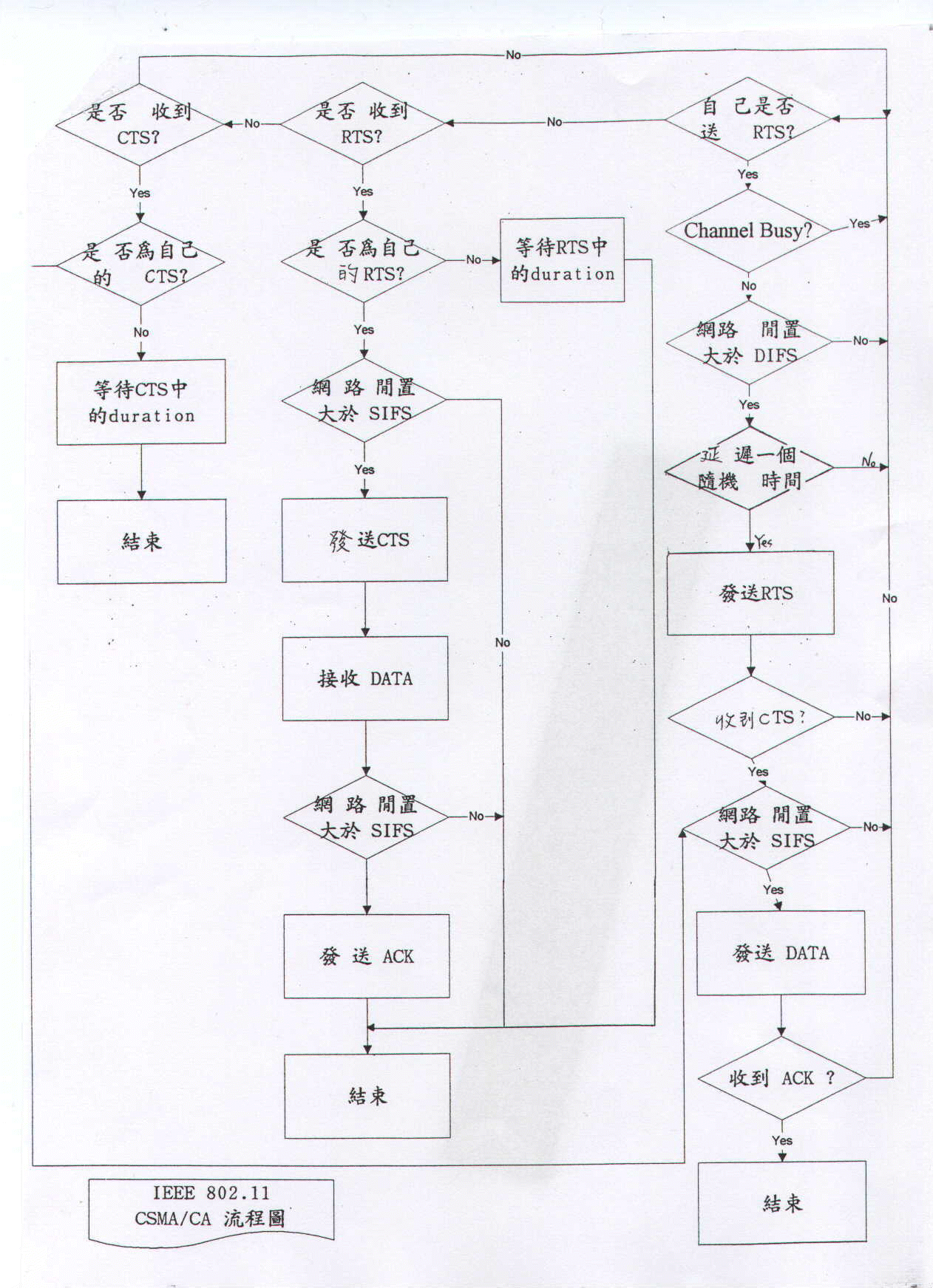
CSMA/CA + RTS/CTS ALGORITHMS
while(1)
{cs0location
case1(qanting to send RTS)
d0(we can write this as fcn1)
{cs1location
if(channel is free)
then
{
time(start);
while(1)
{
time(stop);
if(receiving RTS)
then goto cs2location;
else if(receiving CTS)
then goto cs3location;
if(time(stop)>=time(start)+DIFS)
then if(checking channel is free)
then
{
time(start2);
while(1)
{
time(stop2);
if(receiving RTS)
then goto cs2location;
else if(receiving CTS)
then goto cs3location;
if(time(stop2)>=time(start2)+random(10)*SIFS)
then if(checking channel is free)
then
{
time(start3);
sending RTS;
while(1)
{
time(stop3);
if(receiving CTS)
then break;
else if(time(stop3)>time(star+SIFS)
then goto cs1location;
}
if(channel free>=SIFS)
then
{
if(wanting to send #packet n>=5)
then send i=5 packet
else send i=n packet
if(receiving ACK during timer<=i packet+SIFS)
then goto cs1location;
}
else goto cs1location;
}
else goto cs1location;
}
}
else goto cs1location;
}
}
else goto cs1location;
}
case2(receiving RTS)
do
{cs2location
if(this RTS is for myself)
then
{
if(channel free time>=SIFS)
then
{
time(start4);
sending CTS;
while(1)
{
time(stop4);
if(receiving data)
then break;
else if(time(stop4)>time(start)+CTS+SIFS)
then goto cs0location;
}
if(channel free>=SIFS)
then
{
sending ACK;
goto cs0location;
}
else goto cs0location;
}
else goto cs1location;
}
else
{
tmp_begin=time(begin1);
tmp_NAV=NAV1;
while(1)
{
if(receiving RTS for others and time()=tmp_begin+tmp_NAV)
then
{
tmp_begin=new_begin;
tmp_NAV=new_NAV;
}
}
if(time(now)>=tmp_begin+tmp_NAV)
then goto cs0location;
}
}
}
case3(receiving CTS)
do
{cs3location
if(this CTS is for myself)
then goto cs1location;
else waiting for the duration in CTS;
}
}
SUMMARY
The 802.11 draft standards consist of three main elements, the physical layer
specification, the medium access control specification, and the power saving
functionality. Two working modes ,Ad-Hoc and Infrastructure mode, are defined.
In infrastructure mode either a contention service is ofered by using the
distributed coordination function(DCF), or a contention free service with
possible support for limited delay guarantees by using the point coordination
function(PCF).Figure shows the elements in 802.11 and the services offered as
well as their relation towards each other.
